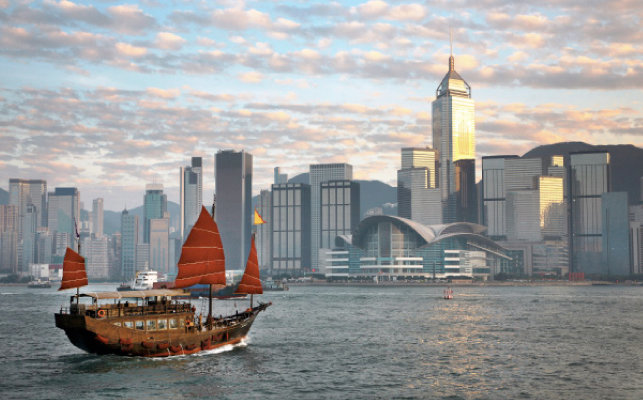
The 2014 Idealog Guide to Export Success: Gary Cross from Idealog on Vimeo.
Global trade is on the road to recovery.
Over the next two years, merchandise trade growth is set to regain its pre-financial crisis vigour, accelerating from 2.5 per cent in 2013 to 8 per cent in 2016.
This upward swing is driven by the strengthening recovery in the US and Europe and the long-term expansion of emerging economies, particularly in Asia and Latin America.
A survey of 5,800 importers and exporters from 25 countries indicates a new optimism after years of desultory growth, but it is tempered by caution. While it may not come as quickly as some would like, the recovery of Western markets looks strong.
Emerging markets, however,are facing a number of challenges and remain more exposed to geopolitical risks such as the uncertainty in Eastern Europe and the Middle East.
The long-term prospects remain bright, and HSBC’s current Trade Forecast predicts that global merchandise trade will almost triple by 2030, driven largely by emerging markets.
Despite the short-term challenges emerging markets face, they have the vitality and ability to rebound from setbacks, and this is driving long-term trade growth and changing the architecture of global trade itself.
According to data from the United Nations Conference on Trade and Development (UNCAD), year-on-year merchandise trade has grown on average less than 1 per cent (0.98%) a quarter since the beginning of 2008 in developed economies and more than 4 per cent (4.03%) in developing economies.
This difference represents the growth in trade between developing nations, which is being driven by two self-reinforcing trends: the increasing atomisation of global supply chains and the rise of the emerging market consumer.
Improvements in logistics management, transport and financial services have contributed to more sophisticated supply chains.
Today, intermediate goods account for two-thirds of China’s imports from the 10 members of the Association of South East Asian Nations and more than half of ASEAN’s imports come from China.
In the past, these goods would have been bought together to create a product to be shipped to markets in Europe and North America – today, that’s only part of the story. Manufacturing has brought prosperity to emerging markets, turning their citizens into consumers in their own right.
We estimate that some 2.6 billion people will join the middle class by 2050, when emerging markets will account for two-thirds of global consumption, up from a third today.
The impact of this seismic shift is already reflected in global trade patterns. For much of the last four decades, trade has been predominantly one way: customers in developed nations buying products made in developing nations.
Today, the world is connected by a web of so-called South-South links: a steel mill in India feeds a parts manufacturer in Vietnam, which supplies an assembly line in Mexico, which sells the finished product to a Brazilian customer.
The implications for the future are intriguing.
As manufacturers in emerging markets move up the value chain – pushed by higher wages and pulled by greater consumer spending power –their cost advantages are becoming less important. Some companies are already ‘re-shoring’ production to developed economies, and there’s no reason why more manufacturers in developed economies won’t eventually play a full and lucrative role in global supply chains.
However, the opportunities presented by the simultaneous diversification of both supply chains and markets bring significant challenges.
New and unknown suppliers and customers, greater complexity, and finer margins must all be managed. But with the right partners and planning, none of these issues is insurmountable.
The trend towards South-South trade is very clear in countries like India. Between 2005 and 2011, trade between India and Africa grew on average 32 per cent a year.
Global management consulting firm McKinsey & Company estimates that by 2025, trade between these two regions could reach $160 billion.
The diversification of trade helps strengthen the global economy, meaning the collapse of any single element is unlikely to drag down the whole significantly. However, it relies on the smooth running of a complex meshing of logistics, transport and communications, all of which are vulnerable to natural disaster, the vagaries of geopolitics and misunderstanding.
Trade growth is always vulnerable, but the recovery of global commerce over the next 15 years will bring prosperity to an unprecedented number of people and contribute to a more stable world.
As the lifeblood of the global economy, trade spreads wealth from rich consumers to poorer producers, spurring growth through innovation and improvements in productivity, and creating new opportunities for future generations.
Find the full Global Trade Forecast report on the HSBC Global Connections website.
IN BRIEF
HSBC was founded in 1865 to finance trade between Asia and the West. Today, it is the world’s leading international trade bank, facilitating over US$500 billion of trade in 2013. With offices in 74 countries and territories, HSBC has access to 87% of world trade. It can assist New Zealand exporters with innovative working capital solutions centred around their trade cycle, and products to assist them with managing the various risks associated with trading internationally.

Gary Cross – Head of Global Trade & Receivables Finance, HSBC
09 368 8630 [email protected]
www.hsbc.co.nz




